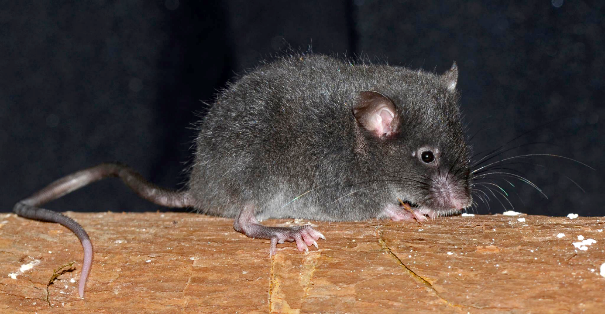LIB researchers discover 172 new species in 2022
 The tree frog species Hyloscirtus sethmacfarlanei, in which the female has a black body with large bright red spots on the dorsal and ventral sides, extremities and toe ends. © Mario Yanez Munoz
The tree frog species Hyloscirtus sethmacfarlanei, in which the female has a black body with large bright red spots on the dorsal and ventral sides, extremities and toe ends. © Mario Yanez Munoz
The blind spot of biodiversity is getting a little smaller: researchers at the LIB were able to name and describe a total of 172 new animal species last year. From cockchafer to blind long-legged spider species to amber inclusions, species from a total of twelve different animal orders were identified. Nevertheless, according to our experts, not only must efforts be increased, but new forms of descriptions must also be developed so that in the future we can continue to fathom the largely still unknown biodiversity of our planet.
According to current estimates, there are over eight million living species worldwide, but less than two million of them have been scientifically described. Researchers at the Leibniz Institute for Biodiversity Change (LIB) discovered previously unknown beetles, butterflies, caddisflies, pseudoscorpions, flies, spiders, snails, fish, snakes, geckos, frogs and mice.
Among the new discoveries are 76 new species of cockchafer and 28 long-legged spiders, including blind cave species from Galapagos. “Even in international comparison with other research institutes and museums, these are very impressive figures, which show that we at LIB are making a great contribution to biodiversity research. Ultimately, we want our work to contribute to preserving nature for future generations,” sums up Prof. Dr Alexander Haas, Head of the Centre for Taxonomy and Morphology at LIB.
The new species were collected during recent fieldwork or thanks to international collaborations around the globe. They came from almost every continent, especially South America, Asia and Africa. Some were found in amber and date back to the time of the dinosaurs – so they are about 100 million years old. Many of them also come from the collections of natural history museums, the places where specimens that have already been collected are kept for decades, waiting to be studied by a taxonomic specialist.
“It has never been more important to describe the unknown biodiversity of the planet in order to protect it, as undiscovered species have a three times higher risk of extinction,” warns Dr. Dirk Ahrens, Section Head Coleoptera at the LIB’s Museum Koenig Bonn. While public interest in climate change is continuously increasing, this is far from being the case for the biodiversity crisis. Yet the loss of biodiversity associated with habitat loss due to human activities and climate change is irreversible and thus puts our future at risk – only a fraction of our own planet’s biodiversity is known so far. “The biodiversity crisis is as big a threat to our livelihoods as the climate crisis. We must continue to make the case for biodiversity conservation. Discovering all these unknown species is therefore important and requires extensive funding, which we do not currently have,” Ahrens urges.
“Completing the knowledge of perhaps half or three-quarters of biodiversity does not currently enjoy the status we need within the research world. By strongly promoting the education and recording of international biodiversity, Germany can be a pioneer for global and open knowledge sharing. Germany’s natural history research museums have a leading role to play here,” says LIB Director General Prof. Dr. Bernhard Misof. The same applies to modern molecular approaches (DNA barcoding), which have recently been applied with the aim of inventorying biodiversity more quickly.
“The fact is that we only know a small part of global diversity, and extinction is progressing at an alarming rate. We urgently want more young scientists whom we can inspire to continue researching biodiversity,” Misof emphasises.
Contact
Dr. Dirk Ahrens
Head of Section Coleoptera
Museum Koenig Bonn, LIB
+49 228 9122 – 286
d.ahrens@leibniz-lib.de
Prof. Dr. Alexander Haas
Head of center for Taxonomy und Morphology, Head of Section Herpetologie
Museum of Nature Hamburg, LIB
+49 40 238317 – 614
a.haas@leibniz-lib.de









